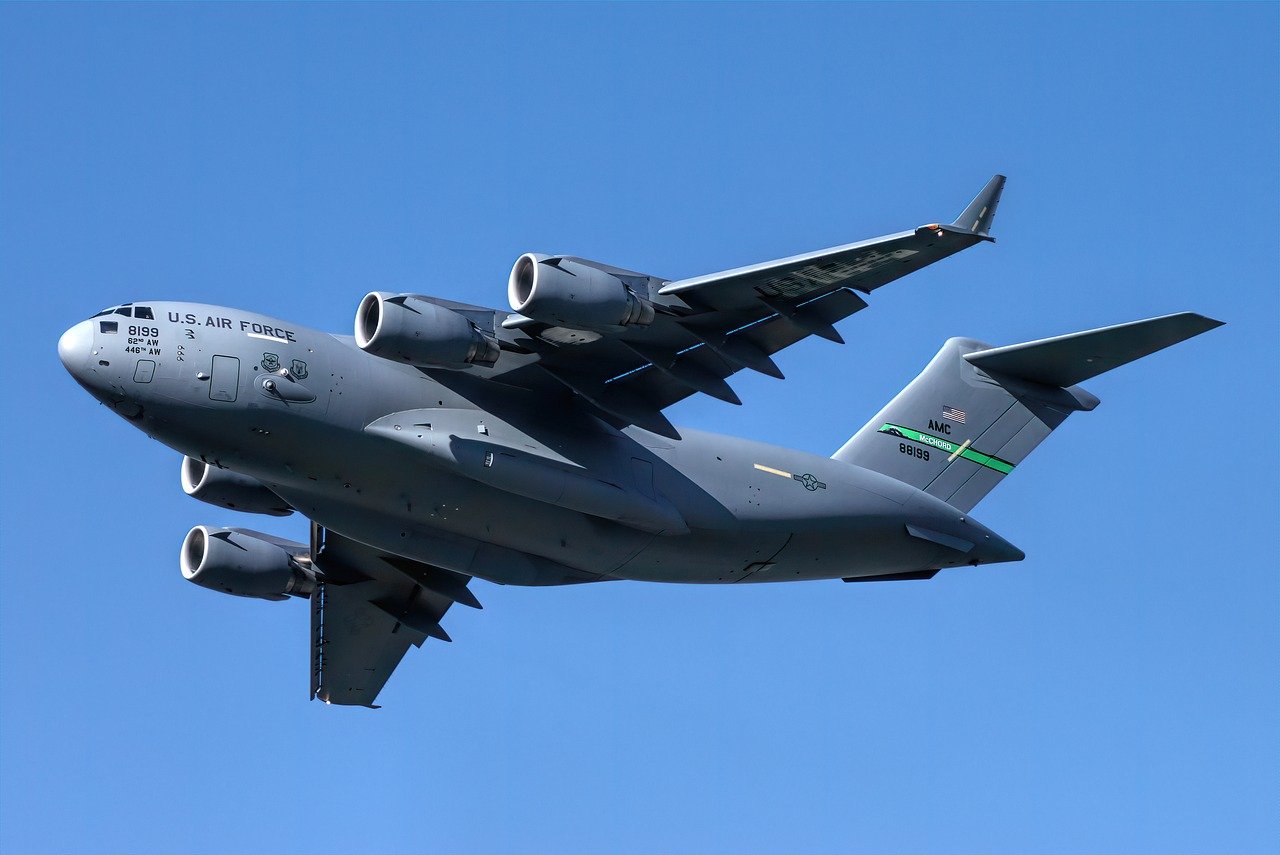The Role of AI in Future Airborne Early Warning Systems
In recent years, the integration of artificial intelligence (AI) into military technology has taken center stage, particularly in the realm of airborne early warning systems (AEW). These systems are crucial for maintaining national security, providing a bird's-eye view of the battlefield, and ensuring that potential threats are detected before they escalate. The role of AI in these systems is not just a trend; it represents a fundamental shift in how military operations can be conducted. Imagine a world where machines can process vast amounts of data faster than any human could, pinpointing threats with incredible accuracy. This is not science fiction; it is the reality we are stepping into, and it is reshaping the future of warfare.
The evolution of AI technology has made it possible for airborne early warning systems to enhance their detection capabilities significantly. With AI, these systems can analyze data from various sensors in real-time, providing military personnel with actionable insights that were previously unimaginable. The ability to process and interpret data swiftly means that decisions can be made in the heat of the moment, potentially saving lives and resources. The future of AEW systems is not just about seeing threats; it's about understanding them, predicting their movements, and responding effectively.
AI's impact on AEW systems extends beyond mere detection. It encompasses decision-making processes that are critical in high-stakes environments. In the chaos of battle, having a system that can offer recommendations based on real-time data can be the difference between success and failure. Furthermore, AI can automate routine tasks, allowing human operators to focus on more complex decision-making. This augmentation of human capability ensures that military operations are not only more efficient but also more effective.
One of the most exciting aspects of AI in AEW systems is its potential for predictive analytics. By leveraging machine learning algorithms, these systems can learn from past encounters, improving their ability to identify and respond to emerging threats. This means that as the system gathers more data, its predictive capabilities become sharper, leading to better preparedness and strategic planning. The synergy between human operators and AI creates a powerful team that can adapt to evolving threats in real-time.
However, with great power comes great responsibility. The implementation of AI in military applications raises several challenges, particularly concerning data security and the need for skilled personnel. As these systems become more advanced, ensuring that sensitive information remains protected from cyber threats is paramount. Additionally, military organizations must invest in training programs to equip their personnel with the necessary skills to operate and maintain these sophisticated systems. The future of AEW systems is bright, but it requires careful planning and execution to realize its full potential.
- What is an airborne early warning system?
An airborne early warning system is a military radar system that detects and tracks aerial threats at long distances, providing critical information for defense operations.
- How does AI improve detection capabilities?
AI enhances detection capabilities by analyzing vast amounts of data quickly and accurately, allowing for real-time threat assessment and improved situational awareness.
- What are the challenges of implementing AI in military systems?
Challenges include data security concerns, integration with existing technologies, and the need for ongoing training and skill development for personnel.
- Can AI predict future threats?
Yes, AI can utilize predictive analytics to identify potential threats based on historical data, improving preparedness and response strategies.

Advancements in AI Technology
Recent developments in AI technology are nothing short of revolutionary, especially when it comes to airborne early warning systems (AEWS). These advancements have paved the way for faster data processing and significantly improved target recognition. Imagine a world where military operations can detect threats before they even materialize; that’s the power AI brings to the table. With the ability to analyze vast amounts of data in real-time, AI systems can discern patterns and identify anomalies that human operators might miss. This means that the effectiveness of surveillance and threat assessment has reached an entirely new level.
One of the most exciting aspects of these advancements is the integration of deep learning algorithms. These algorithms allow AEWS to learn from previous encounters and adapt their responses accordingly. For instance, if a system encounters a new type of aircraft or missile, it can analyze the data and update its threat database, ensuring that future encounters are met with a heightened level of preparedness. This adaptive learning capability is akin to a seasoned soldier who learns from each mission, becoming more effective and efficient over time.
Furthermore, the use of natural language processing (NLP) in AI systems is enhancing communication among military personnel. With NLP, operators can interact with the AI using conversational language, making it easier to extract critical information quickly. This is particularly valuable in high-pressure situations where every second counts. By streamlining the communication process, AI can help operators focus on making split-second decisions rather than getting bogged down in technical jargon.
In addition, AI is increasingly being utilized for predictive analytics. By analyzing historical data, AI systems can forecast potential threats and provide early warnings. This proactive approach is like having a crystal ball that can predict the future, enabling military forces to prepare for possible scenarios before they unfold. Such capabilities not only enhance operational readiness but also save lives by enabling timely interventions.
Moreover, the emergence of cloud computing has played a significant role in the advancement of AI technologies. With the ability to store and process vast amounts of data remotely, military organizations can leverage powerful AI algorithms without the need for extensive on-site infrastructure. This flexibility allows for quicker updates and deployment of new AI capabilities, ensuring that airborne early warning systems remain at the cutting edge of technology.
As we look to the future, it’s clear that the advancements in AI technology are setting the stage for a new era in airborne early warning systems. The combination of improved data processing, enhanced target recognition, and predictive analytics is transforming military operations, making them more efficient and effective. However, with great power comes great responsibility. It’s essential to address the challenges that come with these advancements to ensure that AI is used ethically and securely.
- What is an airborne early warning system?
An airborne early warning system is a military radar system designed to detect and track airborne threats, providing critical information to military operators. - How does AI enhance airborne early warning systems?
AI enhances these systems by enabling faster data processing, improved target recognition, and predictive analytics, which lead to better decision-making and threat assessment. - What challenges are associated with implementing AI in military applications?
Challenges include data security concerns, the need for integration with existing technologies, and ongoing training for personnel to effectively operate advanced systems.

Integration of Machine Learning
Machine learning is not just a buzzword; it’s a game-changer in the realm of airborne early warning systems (AEWS). By leveraging advanced algorithms, these systems are becoming smarter and more responsive than ever before. Imagine having a system that not only detects threats but also learns from past encounters to improve its accuracy and efficiency. This is the power of machine learning, and it's transforming the way military operations are conducted.
At its core, machine learning involves training algorithms on vast datasets, allowing them to recognize patterns and make predictions. In the context of AEWS, this means that the system can analyze data from various sensors and sources, such as radar and satellite feeds, to identify potential threats with remarkable precision. For instance, when an aircraft enters a monitored airspace, the system can rapidly assess its behavior and classify it as friendly, neutral, or hostile based on historical data and real-time analysis.
One of the most significant advantages of integrating machine learning into AEWS is the capability for predictive analytics. This allows the system to anticipate potential threats before they materialize. For example, if a particular type of aircraft has been associated with aggressive maneuvers in the past, the AEWS can flag similar movements as suspicious and alert operators accordingly. This proactive approach not only enhances safety but also provides a tactical advantage in military engagements.
Moreover, machine learning enables adaptive learning, which means that the system continuously improves its performance over time. As it processes more data, it becomes better at distinguishing between normal and abnormal activities. This is particularly important in modern warfare, where the nature of threats is constantly evolving. By adapting to new patterns, AEWS can remain effective against emerging threats that may not have been previously encountered.
To illustrate the impact of machine learning, consider the following table that showcases the differences in threat detection capabilities before and after the integration of machine learning:
| Feature | Before Machine Learning | After Machine Learning |
|---|---|---|
| Threat Detection Time | Several minutes | Seconds |
| Accuracy of Identification | 70% | 95% |
| False Positive Rate | 20% | 5% |
| Adaptability to New Threats | Low | High |
This table highlights how machine learning dramatically enhances the performance of airborne early warning systems. The improvements in detection time, accuracy, and adaptability translate to better situational awareness and more effective response strategies in critical scenarios. The integration of machine learning is not just about keeping up with technological advancements; it’s about staying ahead of potential threats in an increasingly complex battlefield.
In conclusion, the integration of machine learning into airborne early warning systems is paving the way for a new era of military operations. With its ability to provide predictive insights and adapt to evolving threats, machine learning is not merely an enhancement; it’s a necessity. As we continue to explore the vast potential of AI technologies, the future of AEWS looks promising, ensuring that military forces can operate with greater efficiency and effectiveness.
- What is machine learning? Machine learning is a subset of artificial intelligence that involves training algorithms to recognize patterns and make predictions based on data.
- How does machine learning improve airborne early warning systems? It enhances detection capabilities, enables predictive analytics, and allows for adaptive learning to respond to new threats effectively.
- What are the benefits of predictive analytics in military operations? Predictive analytics helps in anticipating threats, improving response times, and enhancing overall situational awareness.
- Can machine learning systems adapt to new types of threats? Yes, machine learning systems continuously learn from new data, allowing them to adapt to emerging threats over time.

Real-Time Data Analysis
In the fast-paced world of modern military operations, plays a pivotal role in ensuring the safety and effectiveness of airborne early warning systems. Imagine being in a high-stakes game of chess, where every second counts, and each move could mean the difference between victory and defeat. This analogy perfectly encapsulates the importance of real-time data analysis in military contexts. With the ability to process vast amounts of information instantaneously, these systems enable operators to make quick, informed decisions that can alter the course of an operation.
At the heart of real-time data analysis is the integration of advanced algorithms and machine learning techniques. These technologies allow airborne early warning systems to sift through data from various sources, including radar, satellite imagery, and intelligence reports. By doing so, they create a comprehensive operational picture that enhances situational awareness. For example, when multiple aircraft are in the air, real-time data analysis can help track their movements, identify potential threats, and predict enemy actions, all while keeping operators informed and alert.
Moreover, the effectiveness of real-time data analysis is not just about speed; it's also about accuracy. In military operations, false positives can lead to unnecessary escalations, while missed threats can have dire consequences. To tackle this, AI-driven systems employ sophisticated algorithms that continuously learn from past data, improving their predictive capabilities over time. This adaptive learning ensures that the system becomes more reliable, allowing military personnel to trust the insights provided by the technology.
Real-time data analysis also enhances collaboration among various military branches. By sharing data across platforms, different units can operate with a unified understanding of the battlefield. This interconnectedness is crucial, especially in joint operations where multiple forces must work together seamlessly. For instance, if an airborne early warning system detects an incoming threat, it can immediately relay this information to ground forces and naval units, facilitating a coordinated response.
In conclusion, the significance of real-time data analysis in airborne early warning systems cannot be overstated. It transforms raw data into actionable intelligence, enabling military operators to respond swiftly and effectively to emerging threats. As technology continues to evolve, the capabilities of these systems will only improve, further solidifying their role as a cornerstone of modern military strategy.
- What is real-time data analysis in military applications?
Real-time data analysis refers to the immediate processing and interpretation of data as it is collected, allowing military operators to make quick and informed decisions during operations. - How does AI enhance real-time data analysis?
AI enhances real-time data analysis by utilizing advanced algorithms that can process vast amounts of information quickly and accurately, improving situational awareness and decision-making. - What are the benefits of real-time data analysis for military operations?
The benefits include improved threat detection, faster response times, enhanced collaboration among units, and increased overall operational effectiveness.

Enhanced Decision-Making
In the fast-paced world of military operations, the ability to make quick and informed decisions can be the difference between success and failure. With the integration of artificial intelligence into airborne early warning systems, decision-making processes are undergoing a remarkable transformation. Imagine being in a high-pressure situation where every second counts; the last thing you want is to be bogged down by uncertainty or outdated information. This is where AI steps in, acting like a seasoned advisor who can sift through mountains of data and present the most relevant insights in real-time.
AI-driven systems harness vast amounts of information from various sources, including radar, satellite imagery, and even social media feeds. By analyzing this data swiftly, AI can identify patterns and anomalies that human operators might overlook. For instance, if a potential threat is detected, the AI can assess its trajectory, speed, and potential impact within moments. This rapid analysis not only enhances situational awareness but also empowers operators to make decisions based on the most current and comprehensive information available.
Moreover, AI systems can simulate various scenarios, providing operators with predictive insights. This means that instead of merely reacting to threats as they arise, military personnel can anticipate potential challenges and prepare accordingly. For example, if the system identifies a suspicious aircraft approaching restricted airspace, it can suggest multiple response strategies based on historical data and current conditions. This proactive approach is akin to having a chess master on your team, always thinking several moves ahead.
However, it’s not just about speed; it’s also about accuracy. AI algorithms are designed to minimize human error, which is crucial in high-stakes environments. By providing clear, data-driven recommendations, AI allows operators to focus on strategic thinking rather than getting lost in the minutiae of data analysis. This enhanced decision-making capability can significantly reduce the cognitive load on operators, enabling them to concentrate on executing their missions effectively.
In summary, the integration of AI into airborne early warning systems is revolutionizing decision-making processes. By providing real-time insights, predictive analytics, and reducing the potential for human error, AI enhances the overall operational effectiveness of military missions. As we move forward, the collaboration between human intelligence and artificial intelligence will undoubtedly shape the future of military strategy.
- How does AI improve decision-making in military operations?
AI enhances decision-making by providing real-time data analysis, predictive insights, and reducing human error, allowing operators to make informed choices quickly. - What role does machine learning play in airborne early warning systems?
Machine learning algorithms help in predictive analytics and adaptive learning, enabling systems to identify and respond to emerging threats more effectively. - What are the challenges of integrating AI into military systems?
Challenges include data security concerns, the need for skilled personnel, and ensuring compatibility with existing technologies.

Automated Threat Identification
In the realm of modern military operations, the ability to swiftly and accurately identify threats is nothing short of crucial. systems, powered by artificial intelligence, are revolutionizing how military forces detect and respond to potential dangers. Imagine having a vigilant assistant that never sleeps, tirelessly scanning the skies and seas for any signs of trouble. This is the essence of what AI brings to airborne early warning systems.
The integration of AI into threat identification processes allows for the analysis of vast amounts of data at lightning speed. Traditional systems often rely on human operators who can become overwhelmed by the sheer volume of information. However, with AI, the system can autonomously sift through data, identifying patterns and anomalies that could indicate an emerging threat. This capability not only enhances the speed of detection but also significantly reduces the cognitive load on human operators, allowing them to focus on strategic decision-making rather than information overload.
One of the standout features of automated threat identification is its ability to learn and adapt. Through machine learning algorithms, these systems continuously improve their accuracy over time. For example, they can analyze past incidents to refine their threat detection capabilities, ensuring that they become more effective with each operation. This adaptability is akin to a skilled detective who learns from each case they solve, becoming sharper and more efficient with experience.
Moreover, the incorporation of AI into threat identification processes facilitates real-time assessments. This means that as soon as a potential threat is detected, the system can immediately relay critical information to operators, enabling rapid response strategies. In high-stakes situations, where every second counts, this capability can be the difference between a successful operation and a catastrophic failure.
To illustrate the impact of automated threat identification, consider the following table highlighting key benefits of this technology:
| Benefit | Description |
|---|---|
| Speed | Instantaneous threat detection and analysis. |
| Accuracy | Reduction in false positives through advanced algorithms. |
| Efficiency | Less cognitive load on human operators, allowing focus on strategy. |
| Adaptability | Continuous learning from new data to enhance detection capabilities. |
In summary, automated threat identification systems represent a significant leap forward in military technology. By leveraging the power of AI, these systems not only enhance the efficiency and accuracy of threat detection but also empower military personnel to respond to potential dangers with unprecedented speed and confidence. As we move forward, the integration of such advanced technologies will undoubtedly play a pivotal role in shaping the future of airborne early warning systems.
- What is automated threat identification?
Automated threat identification refers to the use of AI systems that autonomously detect and analyze potential threats in real-time, enhancing military response capabilities.
- How does AI improve threat detection?
AI improves threat detection by processing large volumes of data quickly, identifying patterns, and learning from past incidents to increase accuracy over time.
- What are the benefits of using automated systems?
The benefits include faster detection, reduced cognitive load on operators, improved accuracy, and the ability to adapt to new threats through machine learning.
- Are there any challenges associated with automated threat identification?
Yes, challenges include data security concerns, integration with existing technologies, and the need for skilled personnel to operate and maintain these advanced systems.

Improving Sensor Fusion
In the realm of airborne early warning systems, sensor fusion is a game-changer. Imagine a conductor leading an orchestra, where each instrument plays a vital role in creating a harmonious symphony. Similarly, sensor fusion integrates data from various sources—radars, cameras, and electronic warfare systems—into a single, cohesive operational picture. This integration is not just about stacking data; it’s about transforming raw information into actionable intelligence that enhances situational awareness and operational effectiveness.
At the heart of improving sensor fusion is the advent of artificial intelligence. AI algorithms are adept at processing vast amounts of data in real-time, allowing military operators to make sense of complex environments quickly. By employing machine learning techniques, these systems can learn from past encounters, refining their ability to identify and prioritize threats based on evolving patterns. For instance, if a particular type of drone consistently exhibits hostile behavior, the system becomes more adept at recognizing similar patterns in the future, thereby enhancing its response capabilities.
Moreover, the advantages of enhanced sensor fusion extend beyond just threat detection. With AI-driven systems, operators can visualize data in innovative ways, making it easier to comprehend the battlefield landscape. This can include:
- 3D Mapping: Providing a three-dimensional view of the operational area, which helps in understanding terrain and potential obstacles.
- Dynamic Tracking: Continuously updating the status of friendly and enemy units, ensuring that operators have the most current information at their fingertips.
- Predictive Modeling: Utilizing historical data to forecast enemy movements and potential engagements, allowing for proactive rather than reactive strategies.
As we delve deeper into the technical aspects, it’s crucial to recognize that sensor fusion is not a standalone process. It thrives on collaboration among various technologies. For instance, combining infrared sensors with traditional radar can significantly enhance detection capabilities, especially in low-visibility conditions. This collaborative approach is akin to a well-coordinated team effort, where each member brings their strengths to the table, ultimately leading to a more formidable defense mechanism.
However, it’s essential to acknowledge that improving sensor fusion through AI also poses challenges. The integration of diverse data types necessitates robust software and hardware solutions capable of handling complex algorithms without lag or failure. Additionally, ensuring that these systems can operate seamlessly with legacy technologies is critical for maintaining operational continuity. The military must invest in the right infrastructure and training to fully realize the potential of these advancements.
In conclusion, the role of AI in improving sensor fusion within airborne early warning systems cannot be overstated. By enhancing data integration and interpretation, AI not only boosts detection capabilities but also empowers military personnel to make informed decisions swiftly. The future of warfare is undoubtedly leaning towards more intelligent systems, and sensor fusion stands at the forefront of this transformation.
Q: What is sensor fusion in airborne early warning systems?
A: Sensor fusion refers to the integration of data from multiple sensors to create a comprehensive understanding of the operational environment, enhancing situational awareness and threat detection.
Q: How does AI improve sensor fusion?
A: AI enhances sensor fusion by processing large volumes of data in real-time, enabling predictive analytics, and refining threat recognition through machine learning algorithms.
Q: What are the benefits of improved sensor fusion?
A: Improved sensor fusion leads to better decision-making, enhanced threat identification, and a more accurate operational picture, ultimately increasing the effectiveness of military operations.
Q: What challenges are associated with implementing AI in sensor fusion?
A: Challenges include ensuring data security, integrating with existing technologies, and the need for skilled personnel to operate and maintain advanced systems.

Challenges in Implementation
Implementing artificial intelligence in airborne early warning systems is not without its hurdles. While the benefits of enhanced detection and decision-making capabilities are clear, several significant challenges must be addressed. One of the most pressing issues is data security. As military operations increasingly rely on AI, the potential for cyber threats grows. Sensitive information can be vulnerable to hacking, and any breach could have devastating consequences. Therefore, establishing robust security measures is essential to protect data integrity and maintain operational effectiveness.
Moreover, integrating AI technology with existing systems can be a complex task. Many military organizations operate legacy systems that may not be compatible with newer AI solutions. This integration challenge requires careful planning and execution to ensure seamless communication between different components. Additionally, the costs associated with upgrading these systems can be significant, leading to budgetary constraints that may delay implementation.
Another critical aspect is the need for skilled personnel. The successful deployment of AI-driven systems hinges on having trained operators who understand both the technology and the operational context in which it is used. This necessitates ongoing training programs to equip personnel with the necessary skills. Without sufficient expertise, organizations risk underutilizing advanced technologies, which could lead to less effective responses in high-stakes situations.
To summarize, the challenges of implementing AI in airborne early warning systems can be categorized as follows:
- Data Security: Protecting sensitive information from cyber threats.
- Integration with Existing Technologies: Ensuring compatibility with legacy systems.
- Skilled Personnel: Providing ongoing training to effectively operate advanced systems.
While these challenges may seem daunting, they are not insurmountable. With a proactive approach that includes investing in security measures, fostering collaboration between technology developers and military organizations, and prioritizing training, it is possible to navigate these obstacles. The future of airborne early warning systems lies in harnessing the power of AI, and overcoming these challenges is a critical step in that journey.
- What are airborne early warning systems?
Airborne early warning systems are advanced radar systems mounted on aircraft that provide early detection of potential threats, enhancing situational awareness for military operations. - How does AI improve airborne early warning systems?
AI enhances these systems by enabling faster data processing, improving target recognition, and facilitating real-time decision-making. - What are the primary challenges in implementing AI in military applications?
The main challenges include data security concerns, integration with existing systems, and the need for skilled personnel to operate and maintain AI technologies.

Data Privacy Issues
In the rapidly evolving landscape of military technology, data privacy issues have emerged as a critical concern, especially when integrating AI into airborne early warning systems. These systems are designed to collect, analyze, and disseminate vast amounts of sensitive information, which can include everything from troop movements to classified intelligence. As we increasingly rely on AI to enhance our operational capabilities, the need to safeguard this data becomes paramount. Imagine a scenario where sensitive military data is intercepted by adversaries; the consequences could be catastrophic, compromising missions and endangering lives.
One of the primary challenges in ensuring data privacy lies in the sheer volume of information processed by these AI systems. The data collected is often stored in cloud environments, which, while convenient, can expose it to various cyber threats. Thus, it is essential to implement robust security measures to protect this information from unauthorized access. Encryption, secure access protocols, and continuous monitoring are just a few strategies that can be employed to fortify data security.
Moreover, the integration of AI raises questions about the ethical use of data. What happens to the data once it has served its purpose? Is it retained, or is there a systematic approach to data deletion? These questions must be addressed to ensure that data privacy is not just an afterthought but a fundamental aspect of AI deployment in military operations.
To further illustrate the importance of addressing data privacy issues, consider the following table that outlines potential risks and mitigation strategies:
| Data Privacy Risks | Mitigation Strategies |
|---|---|
| Unauthorized Access | Implement multi-factor authentication and role-based access controls. |
| Data Breaches | Utilize encryption and regularly update security protocols. |
| Data Retention Issues | Establish clear data retention policies and procedures for deletion. |
| Insider Threats | Conduct background checks and monitor employee access to sensitive data. |
As we navigate these challenges, it is crucial to foster a culture of data responsibility within military organizations. This involves not only adhering to stringent security protocols but also training personnel to recognize and mitigate potential data privacy issues. By prioritizing data privacy, we can harness the full potential of AI in airborne early warning systems while safeguarding our national security interests.
- What are the main data privacy concerns with AI in military applications?
The primary concerns include unauthorized access, data breaches, ethical use of data, and insider threats. - How can military organizations protect sensitive data?
They can implement multi-factor authentication, encryption, regular security updates, and clear data retention policies. - Why is data privacy important in airborne early warning systems?
Protecting sensitive information is crucial to maintaining operational security and preventing adversaries from gaining strategic advantages.

Training and Skill Development
As we venture deeper into the era of artificial intelligence, the importance of cannot be overstated. The integration of AI into airborne early warning systems (AEWS) is not just about implementing new technologies; it’s about ensuring that personnel are equipped with the necessary skills to operate these sophisticated systems effectively. Imagine stepping into a cockpit filled with advanced AI tools, but lacking the knowledge to harness their full potential. It’s like owning a high-performance sports car but not knowing how to drive it. That's why comprehensive training programs are essential.
The complexity of AI systems means that traditional training methods may no longer suffice. Instead, military organizations must adopt a more dynamic approach to education. This includes hands-on training, simulations, and even virtual reality environments that mimic real-life scenarios. By immersing operators in realistic contexts, they can gain valuable experience and confidence in using AI-driven systems.
Moreover, ongoing education plays a critical role in keeping personnel updated with the latest advancements in technology. AI is a rapidly evolving field, and what is cutting-edge today might be outdated tomorrow. Therefore, it’s vital to implement continuous learning opportunities, such as workshops, online courses, and collaborative training sessions with AI experts. This not only enhances the skill set of the workforce but also fosters a culture of innovation and adaptability.
Here are some key components of an effective training program:
- Hands-On Experience: Practical training that allows operators to interact with AI systems in controlled environments.
- Simulation Exercises: Utilizing simulations to replicate real-world scenarios where AI systems are deployed.
- Expert-Led Workshops: Regular sessions with AI specialists to discuss the latest trends and technologies.
- Collaborative Learning: Encouraging teamwork and knowledge sharing among personnel to enhance collective skills.
In addition to technical skills, training must also focus on soft skills such as critical thinking, problem-solving, and decision-making under pressure. These skills are crucial for operators who must interpret AI-generated data and make swift decisions in high-stakes situations. Just like a seasoned chef knows how to adjust a recipe on the fly, military personnel must learn to adapt their strategies based on real-time information from AI systems.
Ultimately, investing in training and skill development is not just a matter of enhancing operational efficiency; it’s about ensuring the safety and effectiveness of military operations. With the right training, personnel can leverage AI to its fullest potential, transforming airborne early warning systems into powerful tools for national security and defense.
- What types of training are necessary for personnel using AI in airborne early warning systems?
Training should include hands-on experience, simulation exercises, and workshops led by AI experts to ensure personnel are well-prepared. - How often should training programs be updated?
Training programs should be updated regularly to incorporate the latest advancements in AI technology and operational tactics. - What soft skills are important for operators of AI systems?
Critical thinking, problem-solving, and decision-making under pressure are essential soft skills for effectively utilizing AI in military contexts.
Frequently Asked Questions
- What is the role of AI in airborne early warning systems?
AI plays a crucial role in enhancing the capabilities of airborne early warning systems by improving detection, analysis, and decision-making processes. It helps in identifying potential threats more efficiently and accurately, leading to better situational awareness during military operations.
- How does machine learning enhance these systems?
Machine learning allows airborne early warning systems to learn from past data and adapt to new situations. This predictive capability means that the systems can recognize patterns and anticipate threats, improving their response times and effectiveness in dynamic environments.
- What are the benefits of real-time data analysis?
Real-time data analysis is vital as it enables immediate threat detection and response. This capability ensures that military operators have up-to-date information, allowing them to make quick and informed decisions in high-pressure situations.
- How does AI improve decision-making processes?
AI-driven systems provide valuable insights that enhance decision-making. By processing vast amounts of data rapidly, they help operators evaluate options and make informed choices swiftly, which is essential during critical military operations.
- What challenges are associated with implementing AI in these systems?
Implementing AI in airborne early warning systems comes with challenges such as data privacy concerns, the need for robust cybersecurity measures, integration with existing technologies, and the requirement for skilled personnel to operate and maintain these advanced systems.
- Why are data privacy issues important in military applications?
Data privacy issues are paramount in military applications because sensitive information must be protected from cyber threats. Ensuring robust security measures is essential to prevent unauthorized access and maintain operational integrity.
- What is needed for successful AI integration in these systems?
Successful integration of AI requires ongoing training and skill development for personnel. This ensures that they are equipped to operate and maintain advanced systems effectively, keeping pace with technological advancements.


















